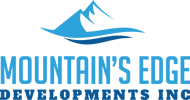
A HELOC is a home equity line of credit. If you own a home worth $500,000 but only have a mortgage remaining of $100,000, it has been possible to also have a HELOC for up to $300,000 (all together borrowing up to 80% on the value of your home). The borrower would only pay for the portion of the HELOC that they were using. Some people would obtain a HELOC simply as an emergency fund, some would use the money as a down payment on an income property, and some would use the funds for other life expenses. For many years banks have been actively marketing HELOC’s as an inexpensive way to pay for renovations. Banks have up-sold us HELOC’s as a product that would make our finances more effective.
But then, the Financial Consumer Agency of Canada took a closer look. It found that HELOC’s represent near 40% of non-mortgage consumer debt, averaging $70,000 per HELOC. And they noticed that roughly 25% of HELOC users only payed interest each month (no principal paydown). Then the Bank of Canada looked a little closer and noticed HELOC’s being used to buy depreciating assets, and/or speculative stocks. Considering the recent trend towards restrictions for federally regulated lenders, we had to expect that new underwriting policies were around the corner.
Quietly on November 5, TD Bank changed their underwriting policy to calculate your debt service ratio based on the overall amount in your HELOC, not just the amount currently used. That’s right: you have to prove that you COULD afford the entire HELOC credit limit, even if your balance is zero and you are responsible—just keeping it around for a rainy day fund. Royal Bank has also implemented the new underwriting policy. Many believe that this policy will continue to be adopted by both the big banks and some of the other lending establishments.
What does this mean to you? If you’re an average consumer, not much. These institutions don’t appear to have plans to make changes when your mortgage renews, nor do they appear to be forcing people to close or decrease their HELOC’s. But if you try to obtain a new mortgage, for example for a rental property, some of the “A” lenders will now ask you to prove that you could afford to pay the interest on the entire $300,000 from our example above.
As a real estate investor, there are still advantages to using HELOC’s for buying an investment property: typically there is no prepayment penalty, it is re-usable credit—as long as you own your primary residence that the HELOC is attached to, and there are possible tax deductions for the interest payments. However, the game just got a little more complicated! We always suggest our investors work closely with a Mortgage Broker who has experience with real estate investors, and who is committed to keeping up with the ever-changing mortgage landscape. If you ever want a list of brokers we recommend, send us a message or give us a call. Working with a skilled broker is really one of the first steps to becoming successful as a real estate investor.

